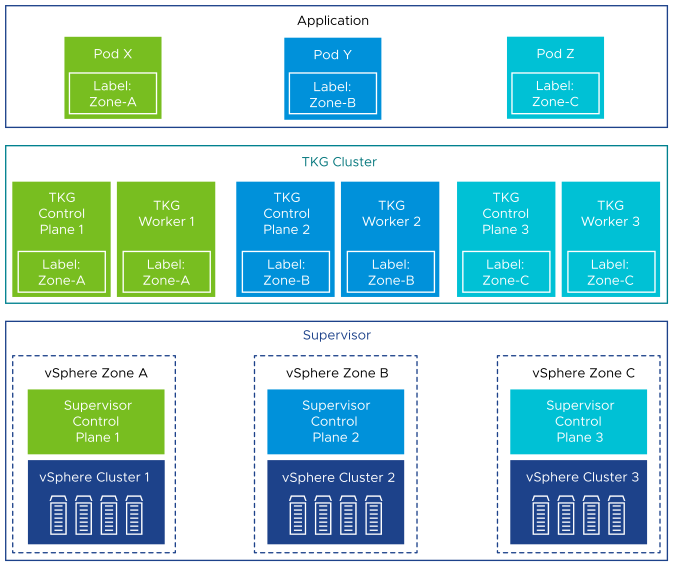This topic provides a set of reference architectures for TKG Service clusters with various deployment topologies.
TKG Service Cluster with NSX Topology
The reference architecture illustrates a TKG cluster on Supervisor with NSX networking. In such an environment, the management plane hosts vCenter Server and NSX Managers. The compute plane hosts NSX Edge Nodes and Supervisor nodes.
- Tier-1 gateway (router)
- Segment (switch) linked to the gateway
- Load balancer server
- Server pool for each TKG cluster control plane virtual server
- Virtual server for each Kubernetes service load balancer instance

TKG Service Cluster with VDS Topology
- Management network for Supervisor control plane VMs
- Workload network for TKG clusters
- Frontend network through which developers connect to TKG Service clusters

TKG Service Cluster with vSphere Zones Topology
The reference architecture depicts a TKG cluster deployed across vSphere Zones. Each vSphere Zone maps to a vSphere Cluster, which is a collection of ESXi hosts managed by vCenter and connected by a vSphere Distributed Switch, with shared storage and qualities of service enabled.
In a zoned topology, you deploy Supervisor across three vSphere Zones. The system locates a Supervisor control plane in each vSphere Zone, providing for high-availability in case of failure.
